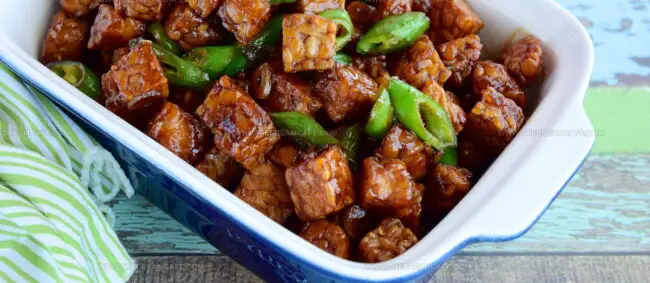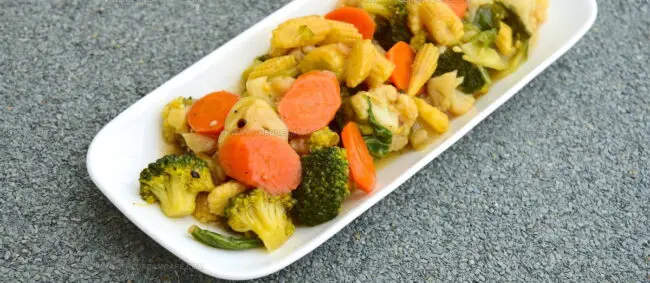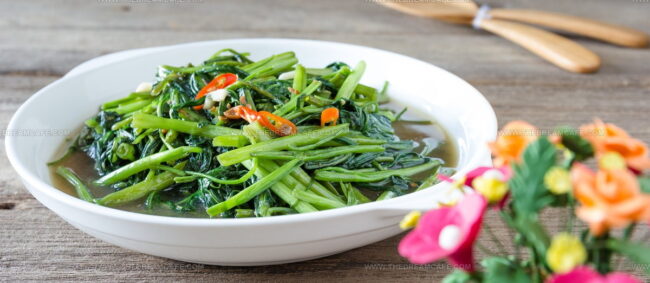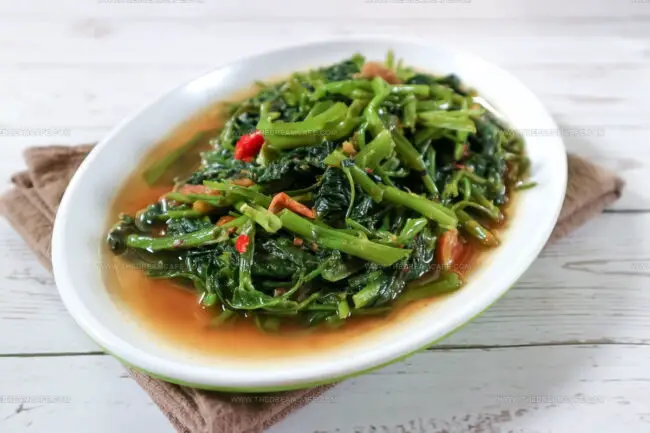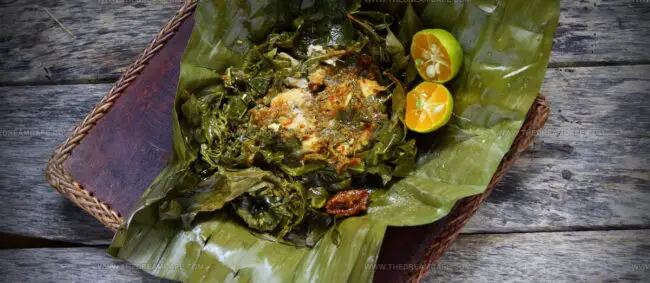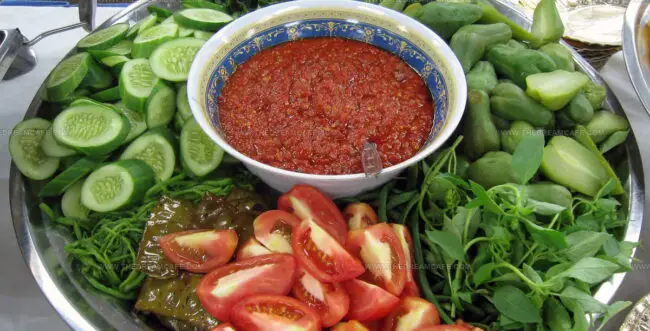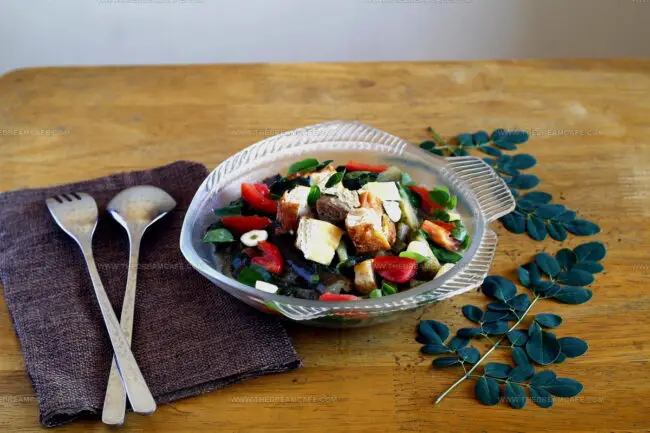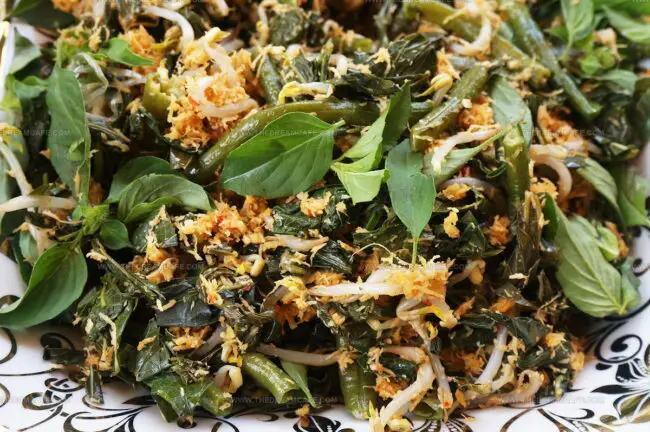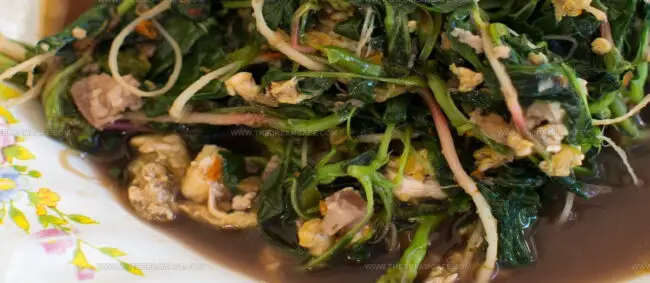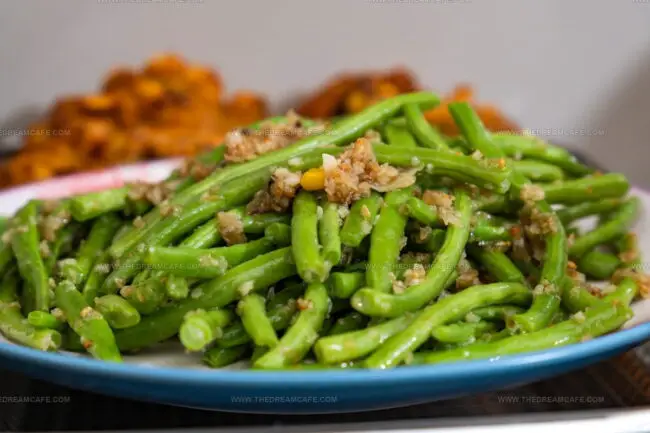20 Sizzling Southeast Asian Vegetable Dishes to Try
Southeast Asian vegetable dishes burst with vibrant colors, complex flavors, and cultural significance that tantalize taste buds and nourish the soul.
Regional cuisines transform humble ingredients into extraordinary culinary experiences through innovative techniques and generations-old cooking wisdom.
Local chefs masterfully blend aromatics, spices, and fresh produce to create unparalleled vegetable masterpieces that reflect each country's unique agricultural heritage.
Distinctive preparation methods highlight seasonal vegetables' natural qualities, transforming them into mouthwatering delicacies that celebrate regional diversity.
Healthy, nutritious, and deeply rooted in traditional cooking practices, these vegetable dishes represent more than just food - they embody cultural identity and communal connections.
Ingredient combinations showcase remarkable creativity, balancing textures, temperatures, and flavor profiles that surprise and delight even the most discerning palates.
Regional vegetables serve as culinary storytellers, capturing the essence of Southeast Asian gastronomic traditions.
You won't want to miss these 20 incredible vegetable dishes that promise a remarkable culinary journey:
Top Southeast Asian Vegetable Dishes for Vibrant Meals
Southeast Asian chefs turn humble veggies into main attractions with the help of zesty sauces and bold spices. Every bite is bright, fresh, and full of life.
Morning Glory Stir-Fry (Rau Muong Xao Toi)
Rau muong xao toi transforms simple water spinach into a flavor-packed Vietnamese vegetable side dish bursting with umami and garlic intensity.
Vietnamese kitchens celebrate this quick stir-fried morning glory recipe as a nutritious vegetarian staple combining bold seasonings like fish sauce, salt, and sugar.
Garlic provides deep aromatic notes that elevate the tender green vegetables during rapid high-heat cooking.
Blanching water spinach before stir-frying ensures crisp texture and vibrant green color.
Restaurant and home cooks typically prepare this dish in minutes as part of a traditional three-course meal alongside white rice.
Fresh ingredients remain key to creating authentic flavor profiles.
Fish sauce adds essential saltiness and depth to the simple vegetable preparation.
Minimal cooking time preserves nutritional value and vegetable crispness.
Water Spinach With Sambal (Sambal Kangkong)
Sambal kangkong is a fiery Malaysian vegetable dish featuring water spinach stir-fried with a spicy chili paste that ignites taste buds with intense flavor.
Regional cooks create this signature side dish by frying sambal paste made from hot peppers, garlic, shallots, and dried shrimp in vegetable oil until aromatic.
Water spinach gets quickly chopped and tossed into the same wok, wilting rapidly under high heat.
Dried shrimp add a subtle umami depth to the bright green vegetables.
Traditional preparation demands quick cooking to maintain crisp vegetable texture.
Malaysian families often serve this dish as a complementary side to rice and protein-based main courses.
Spice levels vary depending on individual preferences and regional variations.
Salt provides final seasoning, enhancing the sambal's complex flavor profile.
Tempe Orek
Tempe orek showcases Indonesia's signature tempeh preparation, transforming this protein-packed soy product into a flavor-dense side dish through a vibrant stir-fry technique.
Indonesian cooks slice tempeh into thin strips and quickly sauté them with kecap manis, creating a glossy, caramelized exterior that locks in rich umami flavors.
Sliced chili peppers and aromatics like garlic, onions, and kefir lime leaves add complex layers of spice and depth to the dish.
Galangal and tamarind juice contribute subtle tangy notes that balance the sweetness of palm sugar.
Authentic versions feature a glossy, slightly sticky coating that clings to each tempeh slice.
Kitchen techniques involve high-heat cooking to create crispy edges and intense flavor concentration.
Traditionally served alongside steamed rice, tempe orek offers a quick, nutritious protein option in Indonesian cuisine.
Regional variations may include additional spices or ingredients based on local preferences.
Tempe
Tempeh delivers exceptional protein content rivaling meat through fermented soybean cake technology originated in Java, Indonesia.
Chinese immigrants accidentally discovered this unique food while processing tofu in the 17th century, transforming discarded soybeans into a nutritious protein source.
Indonesian culinary experts initially developed tempeh as a byproduct with unexpected fermentation potential.
Modern health stores now stock prepackaged tempeh in convenient patty or cake formats for easy preparation.
Its slightly nutty flavor profile allows seamless integration into multiple recipes.
Vegans and health-conscious individuals widely embrace tempeh as a plant-based protein alternative.
Versatility defines this fermented soybean product, enabling creative cooking approaches.
Nutritional density makes tempeh a superior meat substitute for global consumers seeking protein-rich plant options.
Cap Cai
Cap cai is a versatile Indonesian stir-fry featuring a colorful medley of vegetables like cabbage, carrots, cauliflower, and mushrooms, often enhanced with protein options such as beef, shrimp, or chicken meatballs.
Chinese culinary traditions heavily influenced its creation, with the Hokkien dialect name literally meaning "mixed vegetables".
Chefs rapidly stir-fry selected ingredients to maintain crisp textures and vibrant flavors.
Cooks typically prepare a thick sauce using meat or vegetable broth, oyster sauce, and cornstarch for binding.
Spices add depth and complexity to the dish's overall taste profile.
Salt and soy sauce provide additional seasoning nuances.
Each ingredient contributes to a balanced and satisfying meal.
Indonesians enjoy cap cai as a quick, nutritious dinner option that showcases simple yet harmonious cooking techniques.
Phak Bung Fai Daeng
Phak bung fai daeng sparks excitement as a fiery Thai street food vegetable stir-fry featuring crisp Chinese water morning glory quickly fried with bold red birds eye chilis.
Street vendors across Thailand sizzle this spicy green vegetable dish in hot woks, creating a vibrant mix of flavors and textures.
Soybean sauce, oyster sauce, fish sauce, and salted soybean paste enhance the vegetable's natural taste with complex seasonings.
Cooks add sugar and oil to balance the intense flavor profile while maintaining the vegetable's bright green color.
Chicken broth or water helps prevent burning during rapid cooking.
Quick stir-frying ensures the vegetable remains crisp and retains its nutrients.
Diners enjoy this meatless dish solo or paired with steamed rice or rice porridge.
Restaurants and street stalls throughout Thailand serve this simple yet explosive side dish.
Stir-Fried Water Spinach (Tumis Kangkung)
Tumis kangkung represents Indonesian stir-fried water spinach that transforms simple ingredients into a spicy, aromatic side dish bursting with Southeast Asian flavors.
Indonesian home cooks expertly sauté kangkung with fragrant shallots, garlic, and galangal in hot oil until tender and slightly crisp.
Roasted shrimp paste adds deep umami complexity to the vegetable mixture, while hot chili peppers provide a sharp, fiery kick.
Salt and sugar balance the intense seasonings, creating a harmonious blend of sweet, salty, and spicy notes.
Shallots and garlic caramelize during cooking, releasing rich, golden-brown aromatics that enhance the water spinach's natural earthiness.
Galangal contributes a subtle, peppery warmth that distinguishes this Indonesian staple from other vegetable stir-fries.
Traditional preparation involves quick, high-heat cooking to maintain the kangkung's vibrant green color and crisp texture.
Botok
Botok is a traditional Javanese steamed delicacy packed with diverse ingredients wrapped in banana leaves and infused with complex flavors.
Javanese families create this dish by mixing vegetables, dried fish, chili, and coconut flesh into a harmonious blend that transforms when steamed.
Regional variations include additional ingredients like tofu, mushrooms, eggs, or anchovies, which expand its culinary versatility.
Every region in Java offers its unique twist on this classic preparation method.
Banana leaves provide a distinctive aroma and subtle sweetness during steaming, enhancing the overall taste profile.
Salt and spices contribute depth to the mixture, making each bite a rich sensory experience.
Indonesians typically serve botok alongside steamed white rice, completing the meal's balance.
Small portions of this dish can satisfy hunger while delivering a complex range of traditional Javanese flavors.
Lalap
Lalap is a vibrant West Javanese raw vegetable salad bursting with fresh, crisp ingredients like tomatoes, lemon basil, green eggplants, cucumbers, cabbage, and long beans.
Blanched or boiled vegetables such as chayote, spinach, papaya leaves, water spinach, and cassava leaves add depth to its flavor profile.
Indonesian diners enjoy this versatile dish alongside sambal terasi, a spicy dipping sauce that enhances its taste.
Lalap pairs perfectly with pepes, fried fish, and fried chicken, making it a popular side dish.
West Javanese families traditionally prepare this salad without a strict recipe, allowing for creative variations.
Each ingredient contributes a unique texture and freshness to the overall dish.
Served cold or at room temperature, lalap offers a refreshing and healthy eating experience.
This simple yet flavorful salad represents the natural, unprocessed approach to Indonesian cuisine.
Buntil
Buntil are savory Javanese parcels packed with intense flavor combinations that showcase local Indonesian culinary techniques.
Wrapped carefully in taro, cassava, or papaya leaves, these delicate bundles combine grated coconut with red peppers, chili, anchovies, onions, and garlic.
Traditional preparation involves boiling the parcels in rich coconut milk infused with aromatic spices like turmeric, lemongrass, and lemon leaves.
Locals season the mixture with salt and sugar to balance complex taste profiles.
Indonesian families frequently prepare buntil at home during festive periods and religious celebrations like Ramadhan.
Street vendors and small restaurants across Java offer these flavorful packages as popular snack options.
Regional variations might include different leaf types or subtle spice adjustments.
Buntil remains a beloved traditional dish connecting generations through its unique preparation method.
Terong Balado
Terong balado sizzles as a spicy Indonesian vegetarian dish featuring deep-fried eggplants smothered in fiery red chili sauce from Sumatra.
Chinese eggplants work best for this recipe because of their tender texture and ability to absorb flavors quickly.
Indonesian home cooks typically slice eggplants into thin strips before frying them until golden brown and crispy.
Red chilies, shallots, and garlic create the signature balado sauce that coats the eggplant slices with intense heat and complexity.
Vegetarians and vegans enjoy this dish as a flavorful main course or side dish.
Regional variations exist across Indonesia, with some families adding tomatoes or different spice levels.
Street vendors and restaurants frequently serve terong balado as a popular comfort food.
Indonesian cuisine celebrates this simple yet explosive vegetable dish that balances crispy textures with bold, spicy flavors.
Ambuyat
Ambuyat is Brunei's national dish - an extremely sticky sago palm starch delicacy that transforms into a glue-like substance when cooked.
Traditional Bruneians consume this bland yet culturally significant meal using special two-pronged bamboo utensils called chandas to twirl and dip the starch into tangy sauces.
Locals typically prepare ambuyat during special occasions as a rice alternative, serving it with multiple side dishes and condiments.
Fermented sour sauces like binjai (made from local fruits) and tempoyak (crafted from durian) provide essential flavor to the otherwise tasteless dish.
Diners must skillfully wrap the sticky mixture around chandas and swallow it whole without chewing.
Most Bruneians enjoy ambuyat during lunch gatherings with family and friends.
Side vegetables and various dips complement the unique texture and eating experience.
Ambuyat represents a distinctive culinary tradition deeply rooted in Bruneian culture.
Chayote Squash And Garlic Stir-Fry (Qua Su Su Xao Toi)
Qua su su xao toi stands as a signature Vietnamese stir-fry highlighting highland chayote squash from Sapa's mountainous regions.
Northern Vietnamese kitchens transform chayote into thin matchstick-like strips that quickly sizzle with dried shrimp in hot olive oil.
Garlic adds intense aromatic depth to this simple yet flavorful vegetable dish.
Fragrant fish sauce provides a signature umami undertone that elevates the entire preparation.
Dried shrimp introduce a delicate seafood element that complements the mild squash texture.
Vietnamese home cooks typically prepare this quick side dish in less than ten minutes.
Rural mountain communities have perfected this lightweight, nutritious recipe through generations of home cooking.
Batar Daan
Batar daan are hearty vegetarian bean squash medleys originating from East Timor that pack substantial nutritional value and simple rustic flavors.
East Timorese families traditionally prepare this dish with diced squash, mung beans, and corn sauteed with onions and garlic.
Farmers and rural communities often make batar daan using fresh seasonal ingredients from their gardens.
Salt and pepper provide minimal seasoning for this robust vegetable mixture.
Rural households typically serve batar daan as a complete main course alongside steamed rice.
Regional variations might include additional spices or vegetables depending on local availability.
Mountain and coastal communities each develop unique interpretations of this protein-rich vegetable blend.
Indigenous cooking methods ensure batar daan remains a fundamental component of East Timorese dietary traditions.
Dinengdeng
Dinengdeng is a vibrant vegetable-based Filipino soup from the Ilocos region that combines a rich mix of local produce with minimal seasoning.
Bagoong fish sauce provides the primary flavor profile, transforming simple boiled water into a nutritious broth.
Diverse vegetables like jute leaves, marunggay, bitter melon, amaranth, calabaza, sweet potatoes, and okra create the dish's complex texture and taste.
Farmers and home cooks typically select seasonal ingredients available in their gardens.
Optional grilled or fried fish adds protein and additional depth to the soup.
Alkalon blossoms and banana blossoms contribute unique flavors that distinguish this traditional preparation.
Regional variations emerge based on vegetable availability and personal preferences.
The dish reflects resourceful cooking methods that maximize ingredient potential.
Plecing Kangkung
Plecing kangkung bursts with fiery Indonesian flavors from Lombok, featuring blanched water spinach drenched in a spicy chili sambal that electrifies taste buds.
Native islanders create this simple yet explosive side dish by first blanching crisp kangkung leaves until tender and bright green.
Ground red chili peppers form the sambal's intense base, mixed with garlic, shallots, and pungent bird's eye chilies for maximum heat.
Shrimp paste adds depth and umami to the sauce, while salt and sugar balance the sambal's aggressive spiciness.
Indonesian street food vendors and home cooks prepare this dish quickly as a popular accompaniment to grilled meats and rice.
Fresh kangkung provides a light, slightly peppery counterpoint to the sambal's intense heat.
Regional variations might include additional ingredients like roasted peanuts or tomatoes for extra texture.
Small plates of plecing kangkung frequently appear at casual dining tables across Lombok and neighboring islands.
Kuluban
Kuluban represents a zesty Indonesian salad bursting with Central Javanese flavors from Jepara.
Mixed vegetables like jackfruit, spinach, bean sprouts, and string beans form its core ingredients.
Shredded coconut provides a rich textural base for the dish.
Aromatic spices including galangal, garlic, kencur ginger, and orange leaves create complex flavor profiles.
Shrimp paste and chili peppers add intense umami and heat to the combination.
Salt and sugar balance the vegetable medley's overall taste.
Small amounts of complementary ingredients enhance the salad's depth.
Regional cooking traditions showcase this vegetable-forward Indonesian specialty with its unique blend of fresh components.
Tam Makhuea
Tam makhuea emerges as a spicy northern Thai appetizer featuring roasted eggplant crushed with fiery chili peppers, aromatic garlic, and pungent shrimp paste.
Regional cooks carefully char whole eggplants until their skin blackens and flesh softens, creating a smoky foundation for this intense dish.
Shrimp paste adds deep umami complexity while fresh chilies introduce sharp heat and vibrant color.
Garlic contributes additional sharp flavors that complement the eggplant's rich, creamy texture.
Traditional preparation involves grinding ingredients using a mortar and pestle to release maximum flavor and create a rustic, uneven consistency.
Vegetable oil helps bind ingredients and provide a smooth mouthfeel.
Regional variations might include additional ingredients like lime juice or dried shrimp for extra depth.
Sambal Raja Kutai
Sambal raja Kutai embodies East Kalimantan's bold culinary heritage with its intensely spicy and aromatic chili blend from Borneo's Kutai region.
Crafted through traditional grinding techniques using a mortar and pestle, this sambal combines fiery chilies with pungent shrimp paste, garlic, and zesty lime juice.
Indonesian home cooks meticulously crush fresh ingredients to release maximum flavor intensity.
Diced eggplants, long beans, and onions provide a vegetable base that absorbs the sambal's complex seasoning.
Warm serving temperature enhances the condiment's robust taste profile.
Shrimp paste adds deep umami undertones to the mixture.
Regional spice combinations distinguish this sambal from other Indonesian varieties.
Kutai's culinary tradition shines through each spoonful of this potent condiment.
Phat Phak Khom
Phat phak khom is a classic Thai stir-fry dish highlighting spinach as its primary ingredient and showcasing the bold, savory flavors of Southeast Asian cuisine.
Fresh spinach leaves sizzle in a hot wok with minced garlic, creating an aromatic base for this quick and nutritious meal.
Chefs typically enhance the dish with fish sauce, soy sauce, and a touch of sugar to balance the flavors.
Shallots and spring onions add depth and complexity to the vegetable medley.
Thai culinary tradition embraces this simple yet flavorful preparation method, where ingredients are rapidly cooked over high heat.
Traditional recipes respect the spinach's delicate texture while infusing it with umami-rich seasonings.
What Are the Common Cooking Techniques Used for Vegetable Dishes in Southeast Asia?
Southeast Asian vegetable dishes often showcase cooking methods that highlight freshness, texture, and vibrant flavors. Common techniques include:
Which Herbs and Aromatics Are Typically Used in Southeast Asian Vegetable Dishes?
Southeast Asian cooking relies heavily on fresh herbs and aromatics to create its distinctive taste profiles. Key ingredients include:



